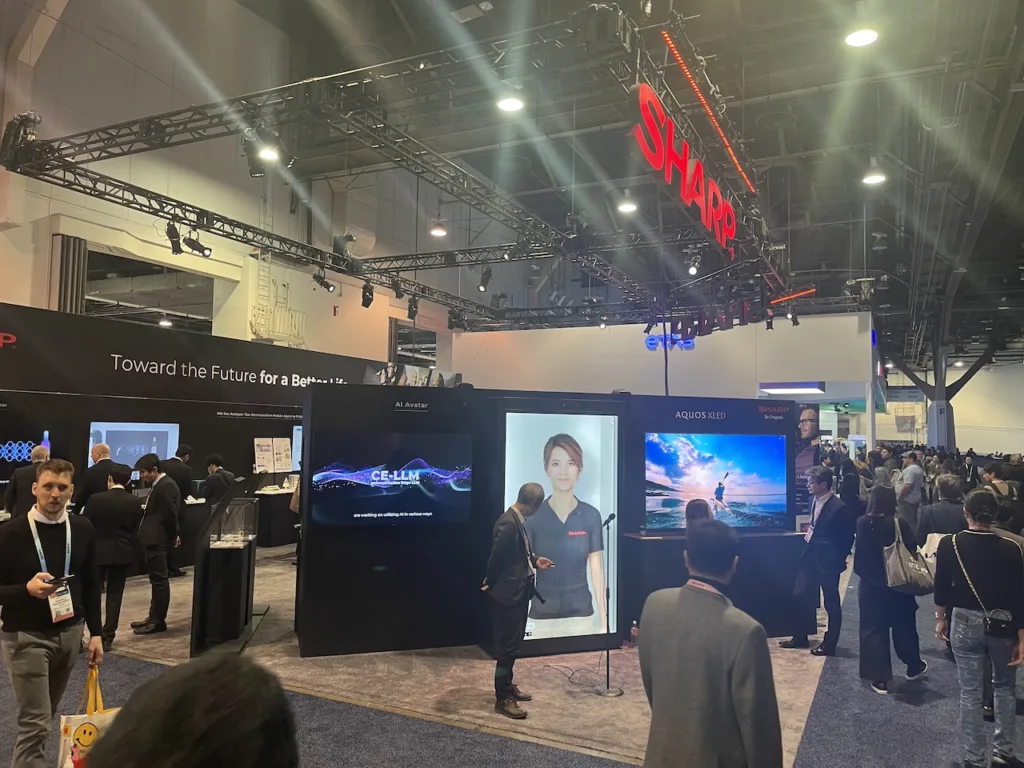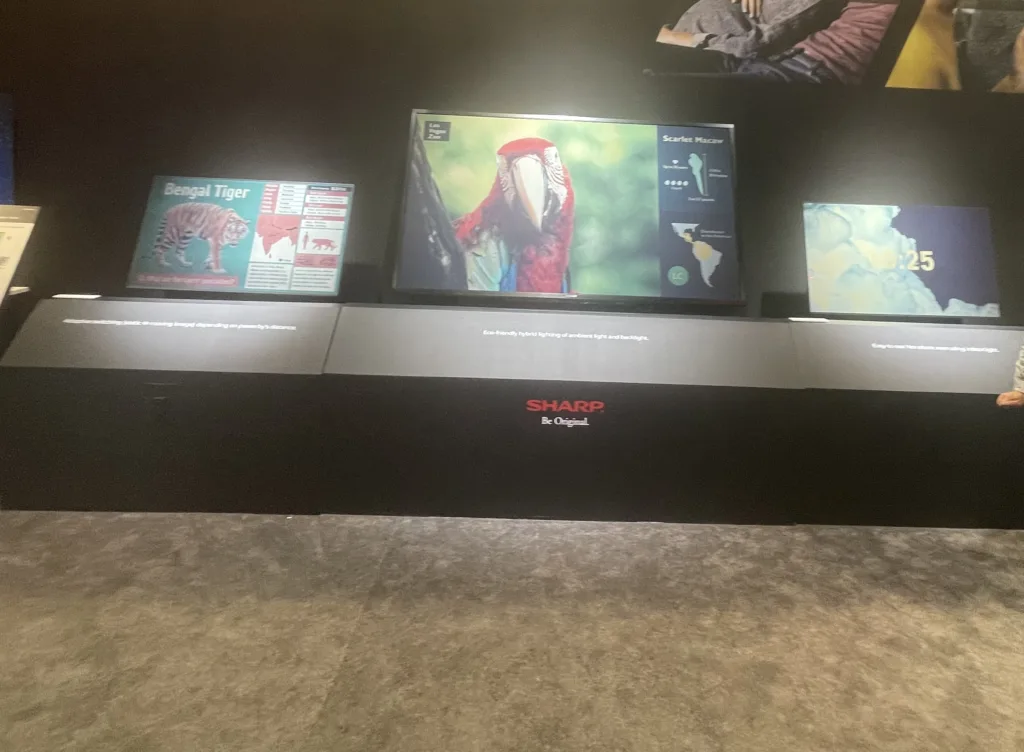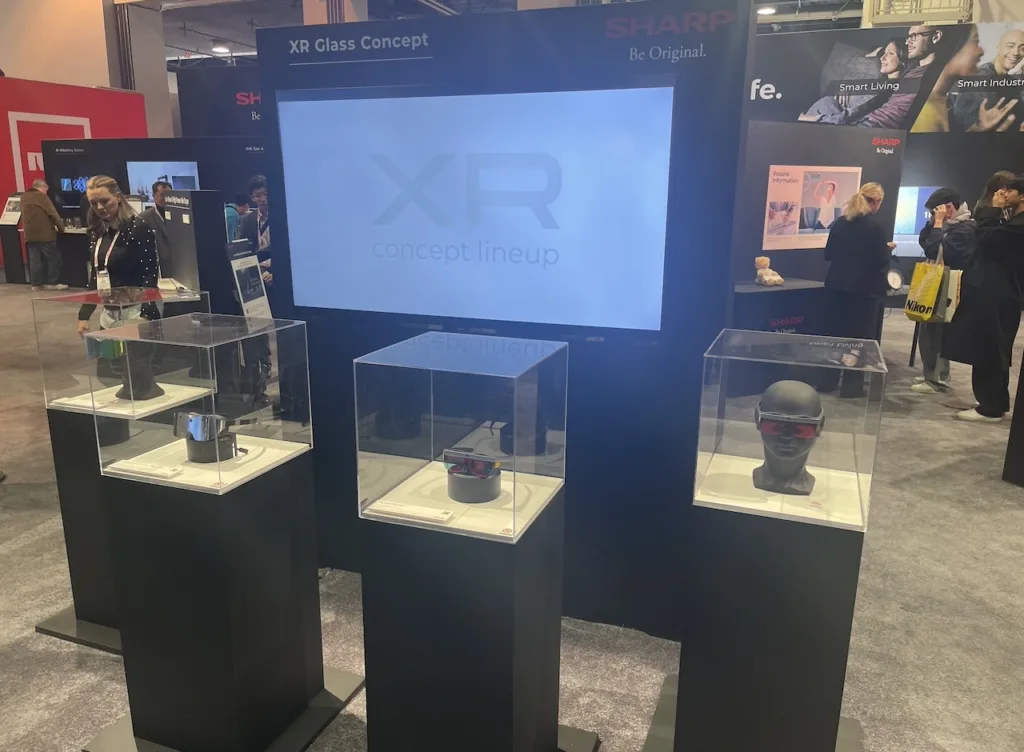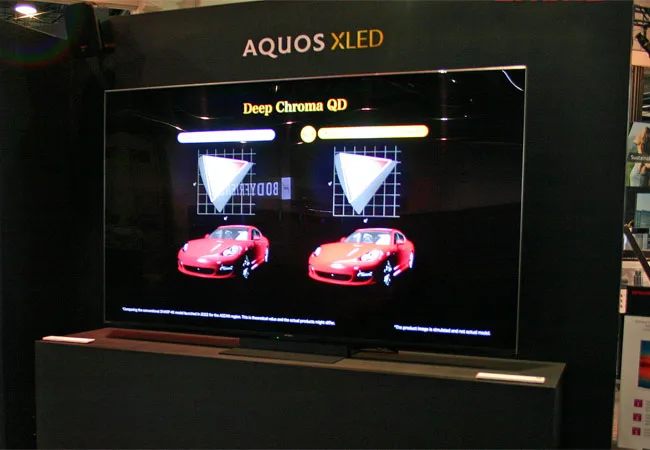Sharp Display, in collaboration with Nanosys, presented two prototype QLED display models at CES 2024 – a 12.3″ and a 30″ display. The 12.3″ prototype, with its 1920×720 resolution and 167ppi, demonstrated the capabilities of this new display technology. A key feature of NanoLED or QDEL technology is its exceptionally wide color gamut, which could significantly enhance the quality of visual experience through more vibrant and accurate colors. The adaptability of this technology is also noteworthy, as it is believed to be easily scalable from small screens to larger TV sizes and may be compatible with existing LCD manufacturing infrastructure.

In the Smart Living zone, Sharp introduced an AI Avatar, featuring CE-LLM (Communication Edge-LLM), an edge AI technology under development. This virtual explainer demonstrated AQUOS XLED’s features through smooth, natural conversations. A high-speed oven, equipped with the industry’s first Gold Carbon Heater as of December 21, 2023, also caught attention for its ability to roast a chicken in one-third the time of conventional ovens, while infusing charcoal-grilled flavor. Additionally, a low noise, high power hair dryer with a hands-free design and dual motors was showcased. The AQUOS XLED Model, designed for the global market, was another highlight, boasting mini-LED backlight, quantum-dot rich-color display technology, and a superior audio system.
I didn’t get an invite to the Nanosys private meeting to learn more about the relationship, although the boss did, but I found the Sharp booth to be less than helpful. My impression is that Nanosys is probably doing the heavy lifting on the promotion of the technology but I would hope that now the company is a part of the Japanese nanomaterials manufacturer, Shoehi, companies like Sharp may be more aggressive in finding new ground in the display market. There is certainly a lot to be said for the value QLED devices, and the promise is certainly there, strongly favoring Japanese display vendors like Sharp, but the general appearance and reaction on the Sharp booth was not encouraging. Maybe it was a case of sell what we have.
The main features of the booth seemed to be some prototypes of VR glasses and headsets, IGZO displays and Sharp e-posters. The company was showcasing technologies previously unveiled at Sharp’s Tech-Day in Tokyo with 3 areas: Smart Living, Smart Industry, and Sustainability.




In the Smart Living zone, front and center on one corner of the booth, as you can see in the first image, Sharp introduced an AI Avatar, featuring CE-LLM (communication edge-LLM), an edge AI technology under development. In other areas there was a high-speed oven, equipped with a gold carbon heater what is claimed to roast a chicken in one-third the time of conventional ovens, while infusing charcoal-grilled flavor. Then, there was a low noise, high power hair dryer with a hands-free design and dual motors. There was one TV showcased, the Aquos XLED, a quantum dot, MiniLED backlight display technology, Sharp’s most prominent global TV product.
What is NanoLED
NanoLED, also called electroluminescent quantum dot (QD-EL) or QD-LED, refers to a light-emitting diode structure created using quantum dot nanoparticles. It is a promising next-generation display technology. It works by current injection into red, green and blue (RGB) emitting quantum dot layers patterned directly onto a display substrate using photolithography or inkjet printing. When current is injected, the quantum dots emit light to form pixels.
In theory, NanoLED devices can achieve superior performance compared to existing displays – high brightness, wide color gamut, high contrast ratio. As for manufacturing, photolithography patterning allows very high resolution without restrictions, so can be applied from small to large displays and inkjet printing allows lower costs but may limit resolution and, hence, application.
Nanosys, the leading proponent of the technology, has keenly touted that the technology uses materials such as indium phosphide (InP), zinc selenide (ZnSe), zinc selenium telluride (ZnSeTe) rather than toxic cadmium-based dots.

